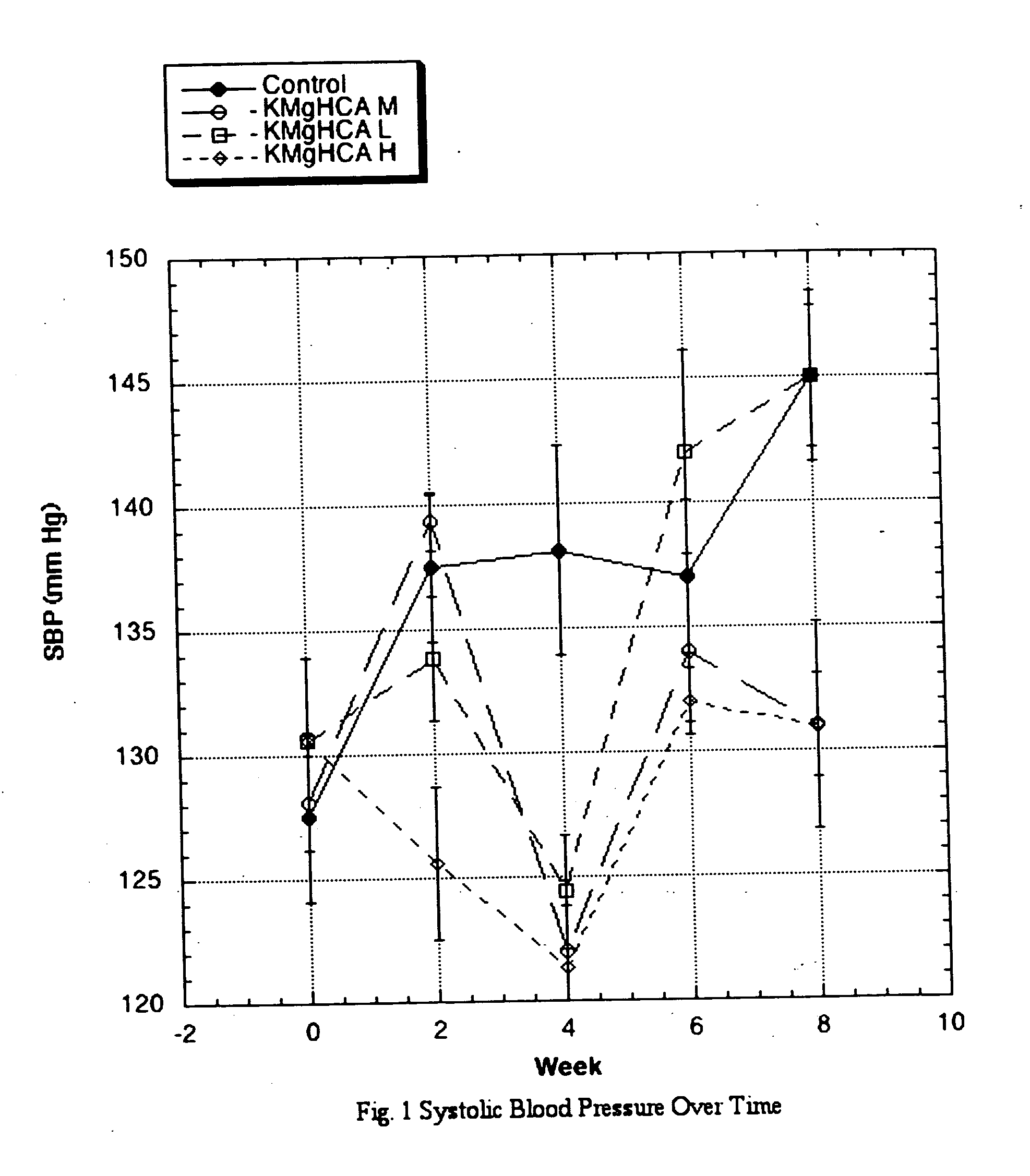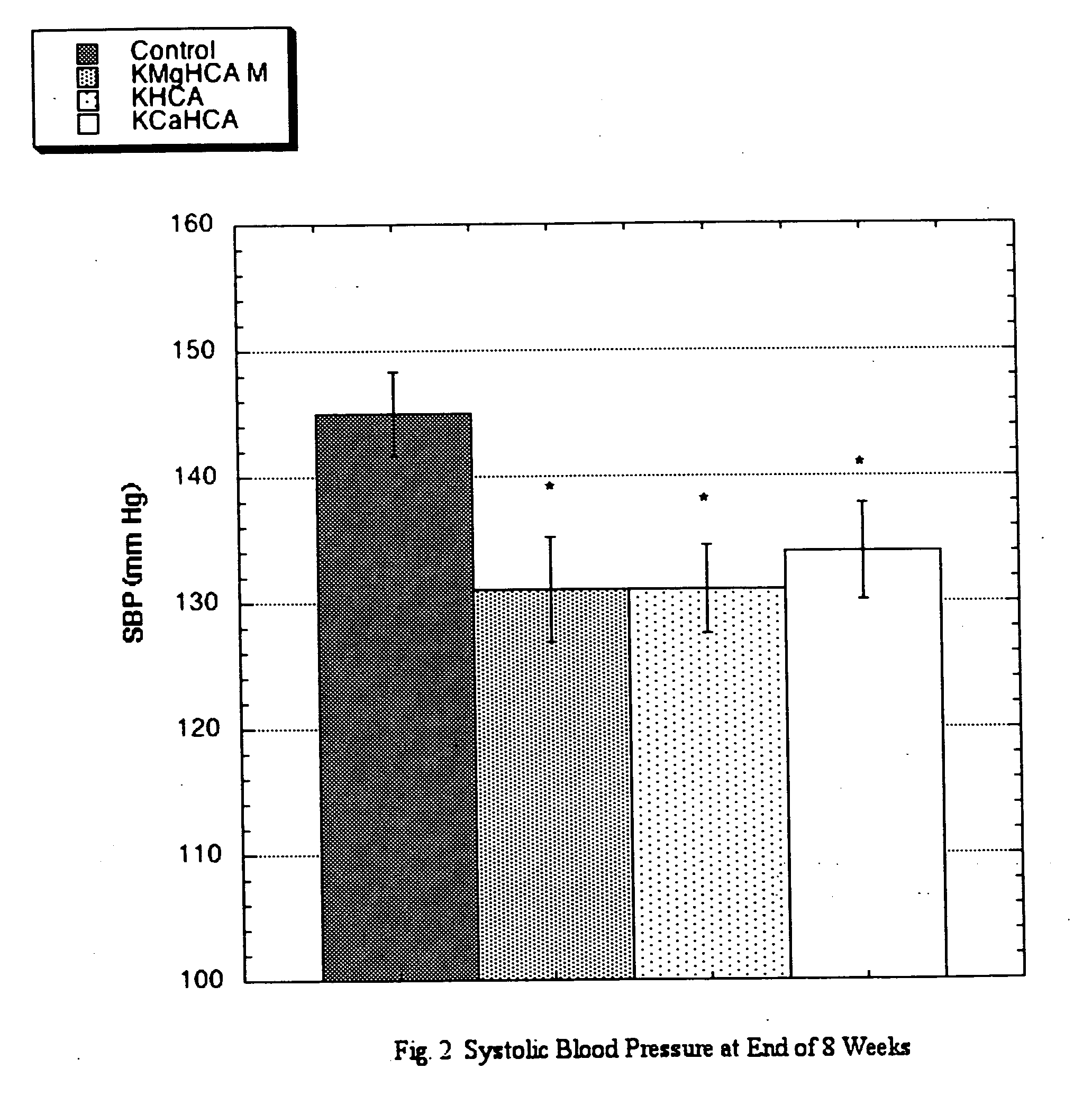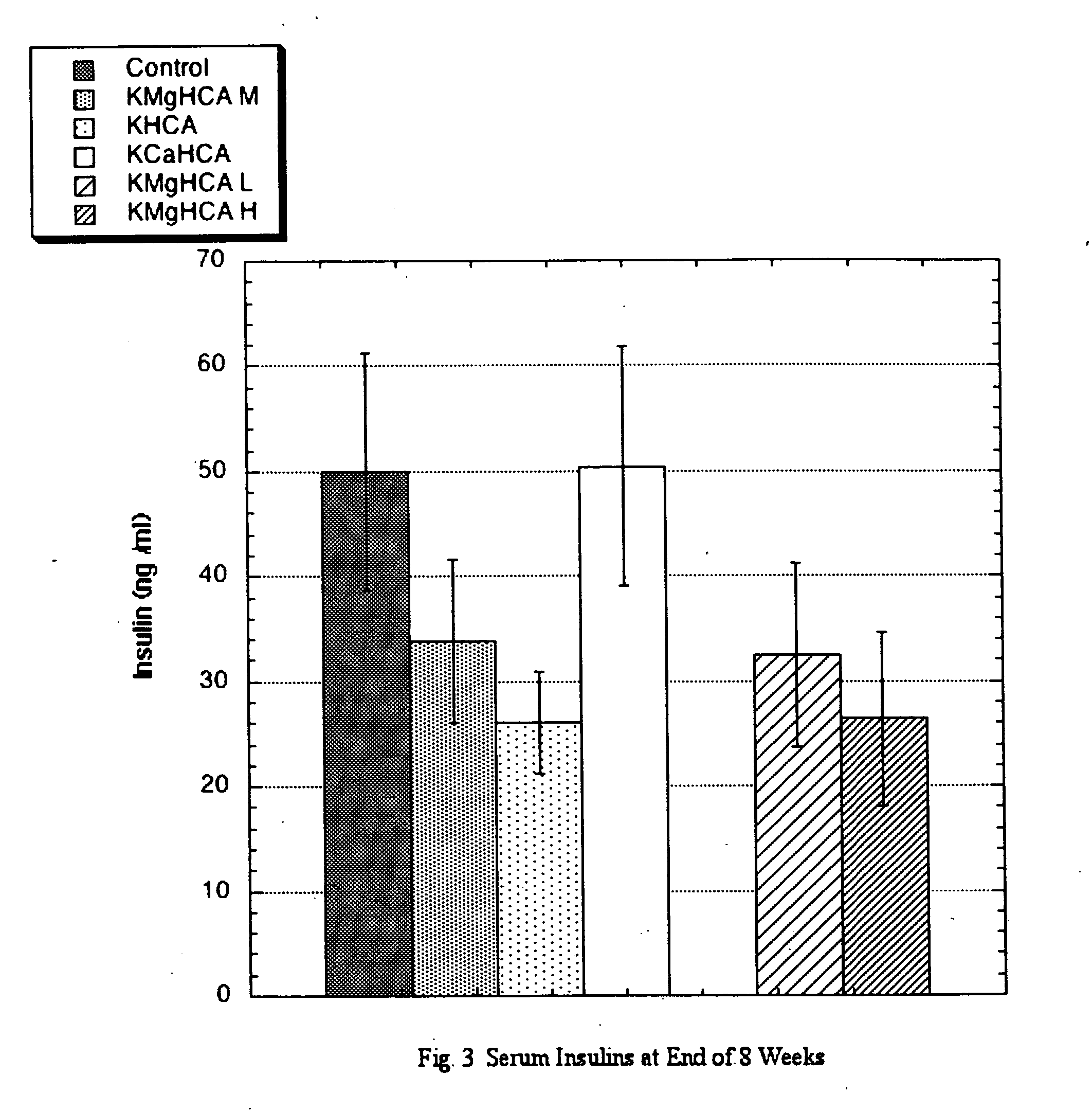(-)-Hydroxycitric acid for the modulation of angiotensin-converting enzyme
a technology of angiotensin-converting enzyme and hydroxycitric acid, which is applied in the field of pharmaceutical compositions, can solve the problems of current pharmaceutical ace inhibitors having side effects and substantial effects on kidney health, and achieve the effects of improving renal health, preventing, treating or improving conditions, and improving results
- Summary
- Abstract
- Description
- Claims
- Application Information
AI Technical Summary
Benefits of technology
Problems solved by technology
Method used
Image
Examples
example 1
Evidence From Blood Pressure Modulation
[0013] A know effect of ACE inhibitors is a reduction in elevated systolic blood pressure. To test this, the following protocol was employed: Sprague-Dawley Rats (SD), approximately 8 weeks of age werw obtained. Six groups of eight male SD received the same standard rat chow manufactured to specifications. The special diets derived 30% of calories from fats (one half from lard and one half from corn oil), 50% from carbohydrates, and 20% from proteins. Twenty percent of dietary calories was derived from sucrose and the preponderance of the remaining carbohydrate calories was derived from dextrin. During weekdays (M-F), each group was gavaged twice daily with a solution containing a commercial source of potassium hydroxycitrate (KHCA), a commercial source of potassium-calcium hydroxycitrate (KCaHCA), or a pre-commercial non-salt source of potassium-magnesium hydroxycitrate (KMgHCA, listed as KMgHCA L-Low, M-Intermediate or H-High depending upon ...
example 2
Response to Losarten Challenge
[0022] Many factors can positively influence blood pressure, e.g., diuretics, antioxidants, regulators of sympathetic / parasympathetic tone, compounds that improve insulin sensitivity and so forth. Therefore, losartan, an angiotensin-2 receptor blocker, was utilized to discover whether the ACE system was involved in the results discussed in Example 1.
[0023] Spontaneously hypertensive rats (SHR) were placed on a diet composed of regular rat chow (60% w / w) and table sugar (40% w / w). This diet reliably elevates blood pressure in this animal model. One group received 100 mg HCA per day in the form of a new potassium-magnesium hydroxycitrate (different from that used in Example 1) via an added 5 g HCA per kg of food mix. Systolic blood pressure and body weight were tested as in Example 1 on a weekly basis.
[0024] Over three weeks, there was a trend for an increase in body weight in SHR consuming KMgHCA (p=0.084) in this model. This was viewed as likely posi...
example 3
A Standard Dosage Form
[0026] Numerous methods can be given as means of delivering HCA as required by the invention, including capsules, tablets, powders and liquid drinks. The following preparation will provide a stable and convenient dosage form.
1 KgIngredientWeightPercentBatch1. Aqueous Potassium Hydroxycitrate500 gm 62.5%0.632. Calcium Carbonate50 gm6.25%0.063. Potassium Carbonate50 gm6.25%0.064. Anhydrous Lactose150 gm 18.75%0.195. Cellulose Acetate Pthalate Acetate50 gm6.25%0.06Total800 gm 100.00%100.00[0027] A. Blend items 1-5 in mixing bowl until smooth and even. [0028] B. Take the liquid and spray into spray-drying oven at 300° C. until white powder forms. When powder has formed, blend with suitable bulking agent, if necessary, and compress into 800 mg tablets with hardness of 10-15 kg. This will mean that each tablet, if starting with 62% KHCA polymer powder, will have about 31% KHCA. However, if the tablets are pressed to 1600 mg, the dose will be equal to 800×62% KHCA....
PUM
| Property | Measurement | Unit |
|---|---|---|
| Mass | aaaaa | aaaaa |
| Mass | aaaaa | aaaaa |
| Mass | aaaaa | aaaaa |
Abstract
Description
Claims
Application Information
 Login to View More
Login to View More - R&D
- Intellectual Property
- Life Sciences
- Materials
- Tech Scout
- Unparalleled Data Quality
- Higher Quality Content
- 60% Fewer Hallucinations
Browse by: Latest US Patents, China's latest patents, Technical Efficacy Thesaurus, Application Domain, Technology Topic, Popular Technical Reports.
© 2025 PatSnap. All rights reserved.Legal|Privacy policy|Modern Slavery Act Transparency Statement|Sitemap|About US| Contact US: help@patsnap.com



